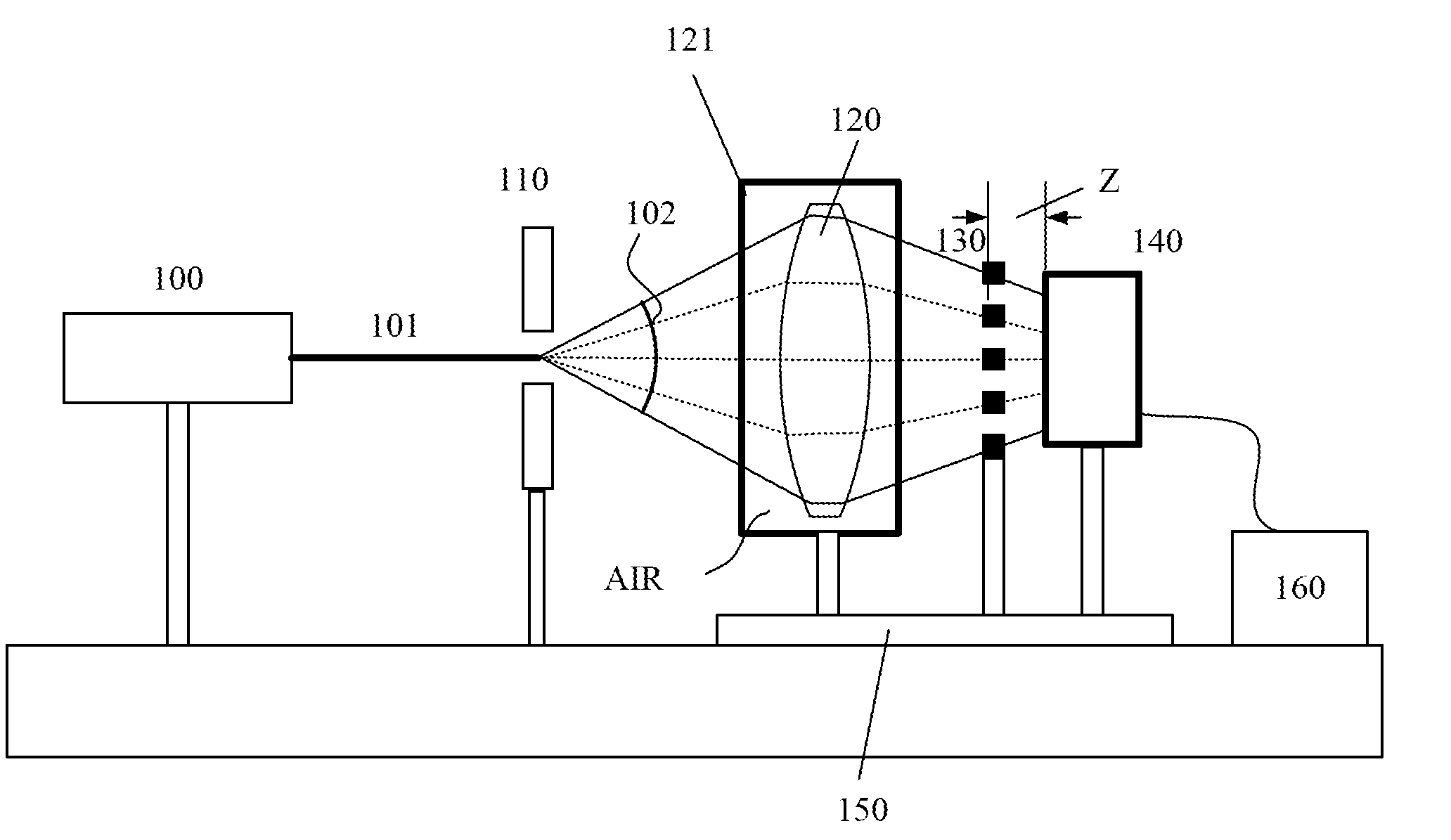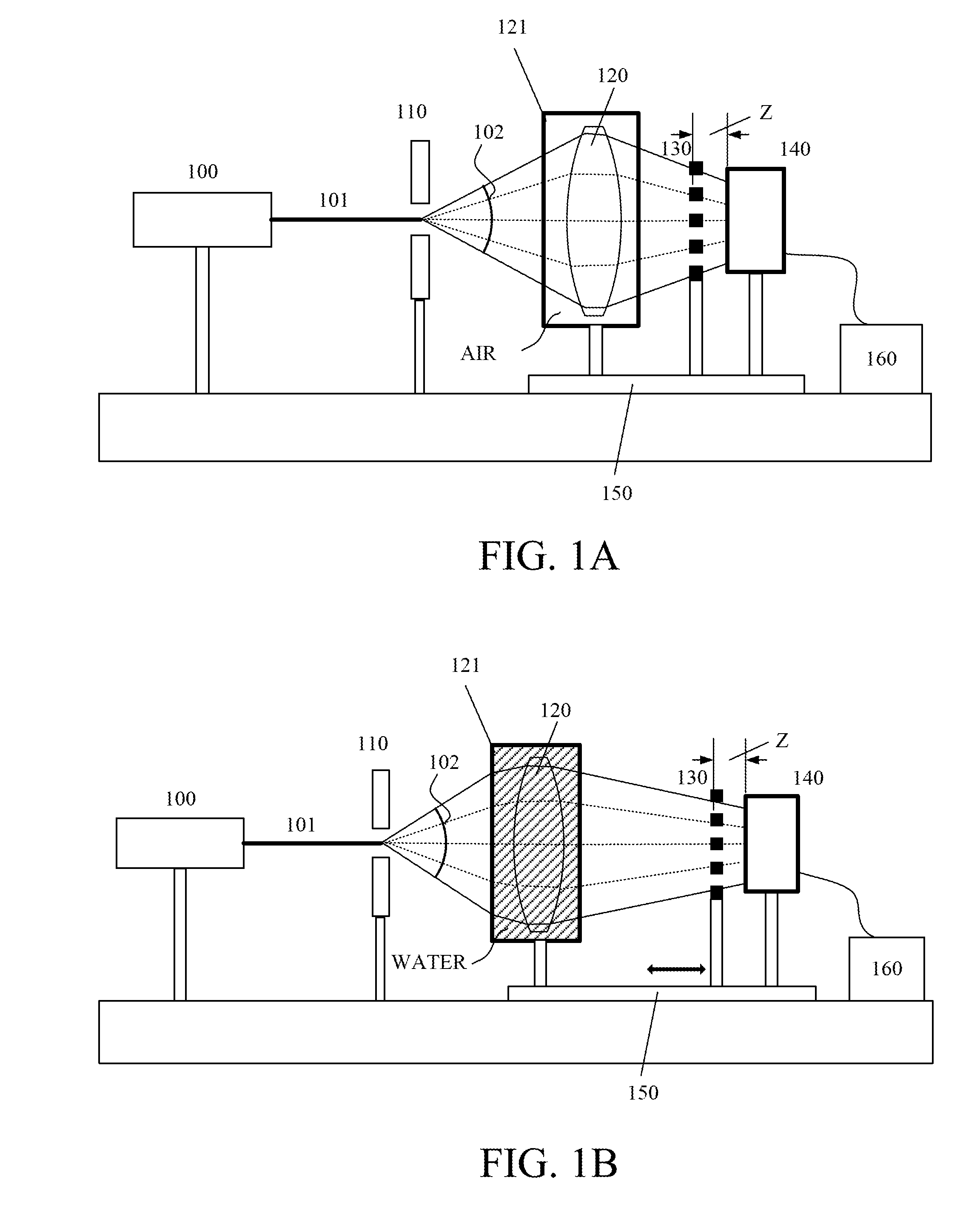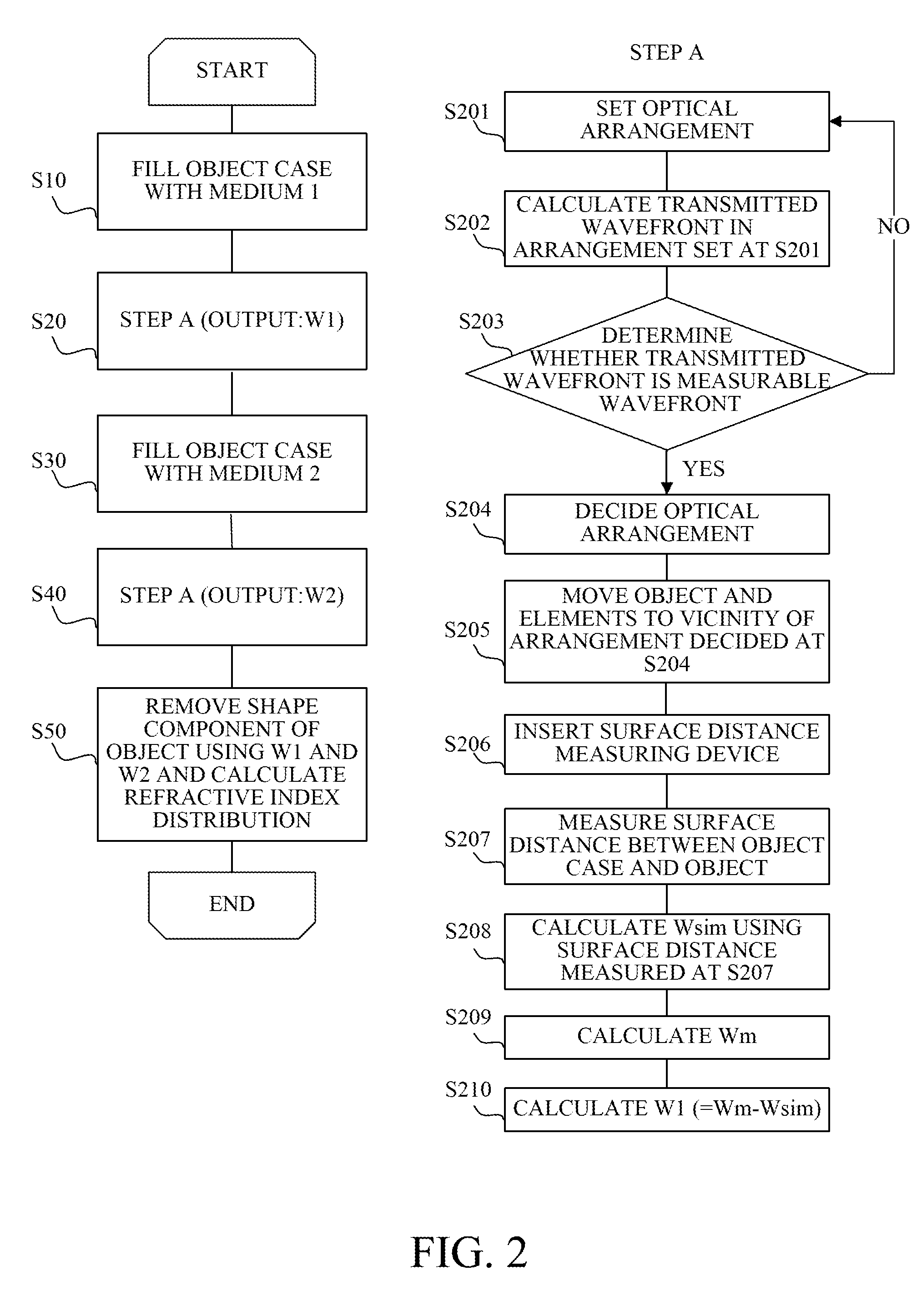Refractive index distribution measuring method and refractive index distribution measuring apparatus
a technology of refractive index and measuring method, which is applied in the direction of instruments, optical apparatus testing, structural/machine measurement, etc., can solve the problems of deteriorating measurement accuracy and inability to obtain desired optical characteristics, and achieve the effect of high-precision measurement of internal refractive index distribution
- Summary
- Abstract
- Description
- Claims
- Application Information
AI Technical Summary
Benefits of technology
Problems solved by technology
Method used
Image
Examples
embodiment 1
[0025]In a first embodiment (Embodiment 1) of the present invention, description will be made of a refractive index distribution measuring method that measures transmitted wavefronts of an object being soaked in two media (air and water, for example) to calculate an internal refractive index distribution of the object.
[0026]FIG. 1A shows a configuration of a Talbot interferometer (refractive index measuring apparatus) that soaks an object 120 which is an optical element such as a lens in air (first medium) to measure a transmitted wavefront (first transmitted wavefront) of the object 120. The object 120 is placed inside an object case 121 and soaked in the air. A refractive index (first refractive index) of the air is lower than that of the object 120 by 0.01 or more.
[0027]Laser light emitted from a laser light source (for example, a He—Ne laser light source) 100 passes through a pinhole (optical member) 110 to be diffracted thereat. The laser light, that is, the diffracted light th...
embodiment 2
[0069]A second embodiment (Embodiment 2) of the present invention will describe a case of simultaneously measuring a refractive index of a medium to reflect it into calculation of the refractive index distribution of the object. A flowchart of FIG. 5 shows a procedure for calculating the refractive index distribution in this embodiment. This embodiment will describe differences from the procedure in Embodiment 1 (FIG. 2). The procedure shown in FIG. 5 is different in steps T10 and T305 to T311 from that shown in FIG. 2.
[0070]In this embodiment, the procedure first measures a thickness (central thickness) D of a center of the object 120 or a central refractive index Nglass that is a refractive index averaged in a thickness direction at the center of the object (step T10).
[0071]Thereafter, at steps T20 to T60, the procedure performs step B to calculate a wavefront aberration W1 in a case where a medium in the object case 121 is air (first medium, MEDIUM 1) and a wavefront aberration W...
embodiment 3
[0081]A third embodiment (Embodiment 3) of the present invention will describe a case where an object 120 has a negative optical power (an optical power is an inverse of a focal length) and a refractive index measuring apparatus other than the shearing interferometer is used. FIG. 6 schematically shows a configuration of the refractive index measuring apparatus of this embodiment.
[0082]A pinhole 110 generates light (reference light) having an ideal spherical wave using laser light emitted from a laser light source 100. The light is converted into convergent light by an illumination system 600. The convergent light passes through the object 120 that is a meniscus lens, and a transmitted wavefront thereof is measured by a Shack-Hartmann sensor 610 that is a wavefront measuring sensor. The Shack-Hartmann sensor 610 is constituted by a lens array 611 and a CCD 612 as shown in FIG. 7.
[0083]Moving the object 120 in an optical axis direction along a rail 150 enables a light flux entering t...
PUM
| Property | Measurement | Unit |
|---|---|---|
| refractive index | aaaaa | aaaaa |
| diameter | aaaaa | aaaaa |
| diameter | aaaaa | aaaaa |
Abstract
Description
Claims
Application Information
 Login to View More
Login to View More - R&D
- Intellectual Property
- Life Sciences
- Materials
- Tech Scout
- Unparalleled Data Quality
- Higher Quality Content
- 60% Fewer Hallucinations
Browse by: Latest US Patents, China's latest patents, Technical Efficacy Thesaurus, Application Domain, Technology Topic, Popular Technical Reports.
© 2025 PatSnap. All rights reserved.Legal|Privacy policy|Modern Slavery Act Transparency Statement|Sitemap|About US| Contact US: help@patsnap.com



